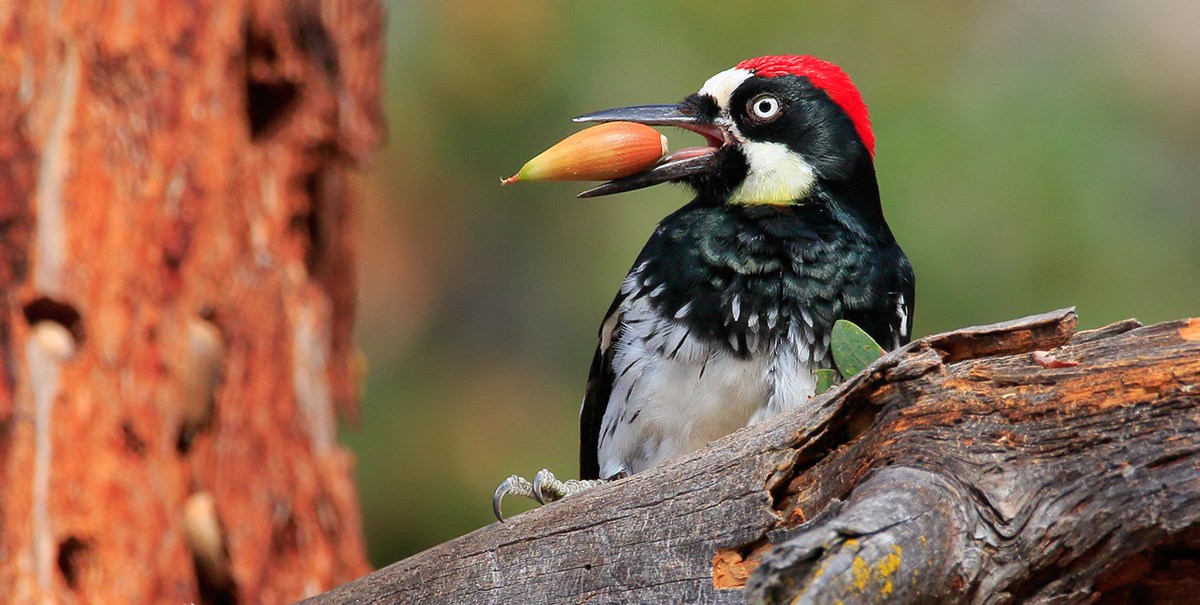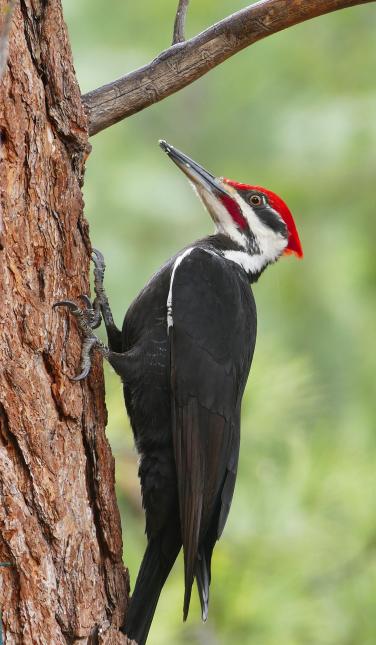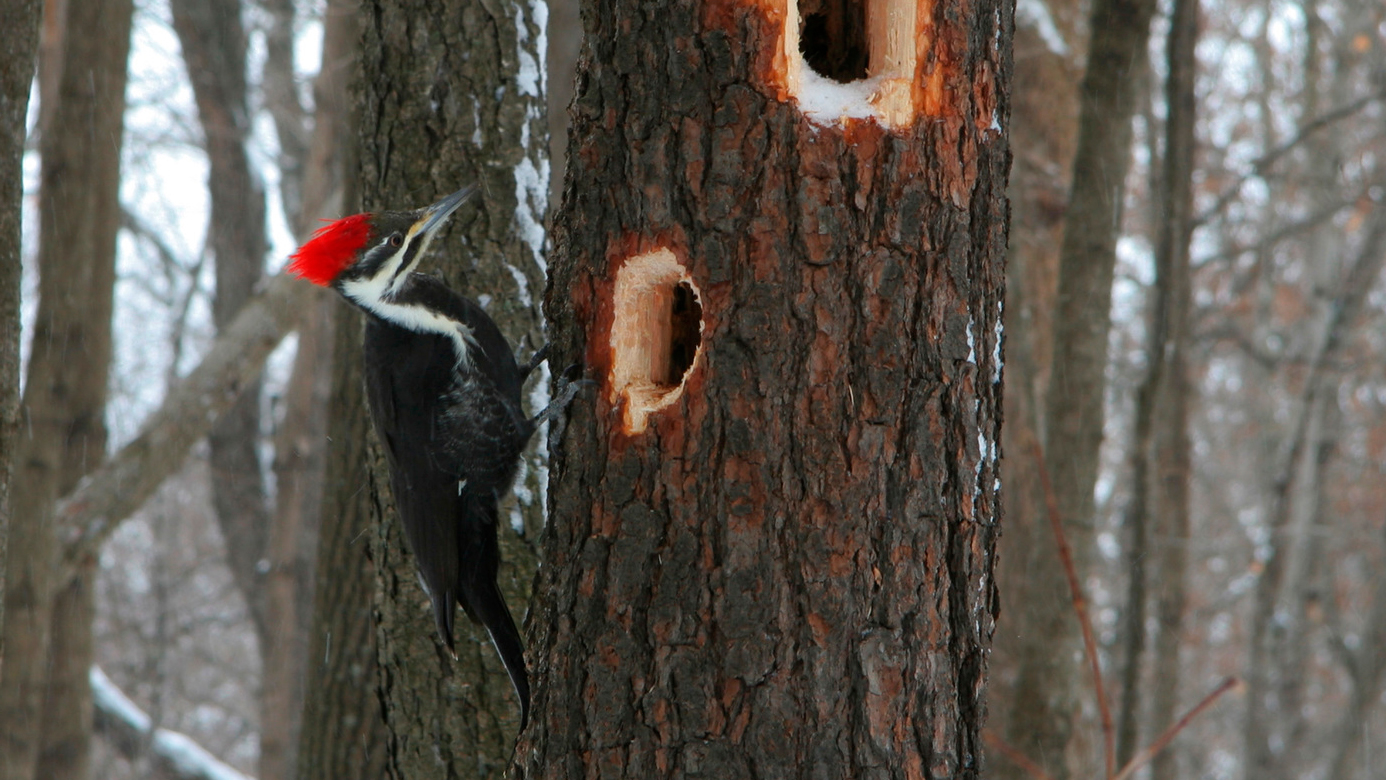Woodpeckers in Florida: Nature, Ecology, and Preservation
Woodpeckers in Florida: Nature, Ecology, and Preservation
Blog Article
Woodpeckers: A Comprehensive Guide to Recognizing These Unique Birds
Woodpeckers, with their distinctive actions and physical qualities, have long captivated the inquisitiveness of ornithologists and nature lovers alike. From their balanced drumming resembling with the woods to their exceptional adaptations for scaling tree trunks effortlessly, these birds present a fascinating study in bird biology. What absolutely establishes woodpeckers apart is not simply their striking look yet likewise their important duty in preserving the delicate equilibrium of environments. As we explore the complex anatomy, diverse types, and ecological relevance of woodpeckers, a much deeper recognition for these unique birds and the secrets they hold unfolds.

Woodpeckers' Drumming Actions
Woodpeckers display a rhythmic and accurate drumming habits that serves numerous vital features in their day-to-days live. This actions is primarily related to interaction, region protection, and foraging. The distinct drumming audio is produced by the rapid pecking of their beaks versus hard surfaces such as tree trunks, branches, or perhaps steel things.
Interaction is a critical element of woodpecker behavior, and drumming plays a significant function in this process. Woodpeckers utilize drumming to develop their existence, draw in companions, and maintain contact with their partners and children. The regularity, strength, and period of drumming series share specific messages to other woodpeckers in the area.
Along with interaction, woodpeckers make use of drumming actions for region defense. Woodpeckers in Florida. The loud and repetitive drumming functions as a warning to possible intruders, signaling that the area is currently declared. By establishing their area via drumming, woodpeckers reduce the probability of conflicts over valuable resources such as food and nesting websites
Furthermore, woodpeckers additionally utilize drumming as a foraging technique. The balanced pecking assists them find pests hiding under the bark of trees by developing vibrations that disrupt the target's cover-up. This behavior showcases the adaptability and resourcefulness of woodpeckers in using their drumming abilities for multiple necessary purposes.
One-of-a-kind Adaptations for Tree Climbing
Having actually understood the art of drumming to connect, safeguard area, and forage, woodpeckers have actually advanced unique adaptations that promote their amazing climbing up capacities in their arboreal environments. One essential adjustment is their specialized feet. Woodpeckers have zygodactyl feet, with two toes pointing ahead and 2 toes aiming in reverse. This arrangement provides a strong grasp on the upright surfaces of trees, permitting them to stick effortlessly while foraging for pests or drumming. Additionally, woodpeckers have rigid tail plumes that act as a prop to support their bodies as they climb up. These tail feathers give stability and equilibrium, enabling woodpeckers to steer up tree trunks with accuracy and agility.
In addition, woodpeckers have powerful neck muscles and a distinct skull structure that help in their climbing abilities. Their strong neck muscular tissues allow them to quickly peck at tree bark without experiencing whiplash, while their thick head and small mind function as shock absorbers, securing them from the influence of duplicated drumming. These adjustments jointly make it possible for woodpeckers to browse the vertical globe of trees with performance and elegance.

Role of Woodpeckers in Environments
Playing an essential function in this hyperlink woodland ecological communities, woodpeckers contribute significantly to the balance and health of their habitats via their one-of-a-kind actions and communications with other varieties. Among the vital ecological features of woodpeckers is their duty in controlling insect populaces. By foraging for bugs under the bark of trees, woodpeckers assist manage pest populaces, preventing break outs that could damage the total wellness of the forest. Additionally, woodpeckers create cavities in trees that act as vital nesting sites for a range of various other bird species, promoting biodiversity within the ecosystem.
Moreover, the drumming and articulations of woodpeckers play an important duty in interaction and area facility. These sounds not just offer to attract companions but also aid define boundaries between various woodpecker territories, lowering problems and advertising an unified conjunction within the forest neighborhood. Overall, the presence of woodpeckers in forest ecological communities highlights their significance as keystone species, click here for info influencing the dynamics and working of these habitats in diverse means.
Makeup: Specialized Beaks and Feet
In the elaborate web of forest communities, the specialized beaks and feet of woodpeckers are crucial adjustments that enable them to fulfill their essential eco-friendly duties. Woodpeckers have special physiological functions that are especially developed to help them in their foraging and nesting habits.
One of the most distinguishing characteristic of woodpeckers is their strong, chisel-shaped beaks. These beaks are perfectly adapted for boring into wood to reveal insects, larvae, and sap surprise below the bark of trees. The strong muscular tissues and tough framework of their beaks allow woodpeckers to peck at a rate of approximately 20 times per secondly without creating damages to their skulls.
In addition, woodpeckers have actually specialized feet that aid in their acrobatic climbing capacities. Their feet have two toes directing forward and 2 toes pointing backwards, providing a solid hold on vertical surfaces (Woodpeckers in Florida). This unique foot arrangement, along with stiff tail plumes that work as an encouraging prop, permits woodpeckers to hold on to tree trunks and branches with convenience while they look for food or excavate nesting cavities
Woodpecker Types Variety
What factors contribute to the impressive diversity of woodpecker types across different environments and regions? Woodpeckers are a diverse team of birds discovered throughout numerous environments worldwide, with over 200 well-known types displaying adaptations to various atmospheres. One essential variable driving this diversity is the schedule of ideal environments. Woodpeckers have actually progressed to occupy a series of environments, from woodlands and woodlands to grasslands and deserts, each presenting special challenges that have affected the advancement of distinct woodpecker varieties.
Another contributing aspect to woodpecker varieties diversity is their specialized feeding actions. Various species have actually evolved to exploit numerous food resources, such as insects, tree sap, fruits, and nuts, bring about the development of certain adjustments in beak form, dimension, and toughness. These adjustments enable woodpeckers to forage efficiently in their particular habitats, visit the website reducing competitors amongst varieties and promoting particular niche distinction. Additionally, geographical isolation and historic variables have actually contributed in forming the distribution and variety of woodpecker types, bring about the vast selection of specialized adaptations seen in these fascinating birds.

Conclusion
To conclude, woodpeckers are interesting birds that display one-of-a-kind drumming actions, specialized adaptations for tree climbing, and play important functions in ecosystems. Their anatomy, including specialized beaks and feet, enables them to thrive in their atmosphere. With a diverse variety of woodpecker varieties discovered worldwide, these birds are necessary for maintaining the health and balance of woodlands and woodlands. Comprehending and appreciating the ins and outs of woodpeckers can supply important understandings right into the environment.
Report this page